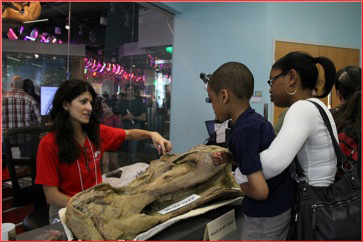The Evolving Partnership between Museums and Universities in the Public Interest
This article was co-written by Emlyn Koster, Director of the North Carolina Museum of Natural Sciences and Adjunct Professor at North Carolina State University (NCSU), and Jason Cryan, Deputy Museum Director for Research and Collections at the North Carolina Museum of Natural Sciences and Adjunct Professor at NCSU.
Museums of natural history, the natural sciences, science and technology, and their hybrids with robust research and collections components are undergoing a transformation in their relationships with academia, and vice versa. No longer is the museum simply a conveyor of past research to the public, for example. Museums and universities are becoming mutually beneficial partners. For their part, museums offer research expertise in scientific disciplines underrepresented in university faculties, new venues for substantial outreach and educational initiatives, and public access opportunities to science in inviting ways.

A research lab housed in the North Carolina Museum of Natural Sciences.
As these relationships evolve, so too do the modes of formal connection and the array of benefits resulting from collaborations between museums and universities. Three were the focus of a session at the 2014 ASTC Conference, titled Tapping the Potential of Museum-University Partnerships. In Columbus (Center of Science and Industry (COSI) and The Ohio State University) and Boston (Museum of Science and Northeastern University), faculty engage in the broader impact dimension of their research projects and interact with school students, families, and adults at the museum. In Raleigh (North Carolina Museum of Natural Sciences and NCSU), the museum and the University of North Carolina System together fund a new genre of jointly appointed researchers which further blurs institutional boundaries, accelerates innovation, and facilitates citizen science projects.
Future articles in Perspectives will probe these shifts in museum-university collaborations, both to raise awareness of them across the U.S. and to contribute to the sixth goal of the declaration at the Science Centre World Summit in Mechelen, Belgium on March 17, 2014. This stated: "[Science centers will] engage the public more directly with research, using this engagement to help empower people, broaden attitudes and ensure that the work of universities and research institutions is relevant to society and to wider social concerns on a global scale." The inaugural conference on citizen science, organized by the new Citizen Science Association in San Jose, CA next February 11-12, will also profile many new developments at the academy-public interface, including the evolving outlook and practices of science museums. Through sharing these models, the aspiration for this blog series is to inform and inspire other museums and universities across the U.S. and abroad to think creatively and transformatively about how to work together to engage the public with scientific research and its broader impacts.